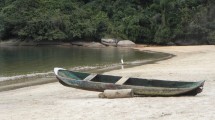Abstract
The Norwegian National Committee for Research Ethics inScience and Technology (NENT), collaborating with The NorwegianFisherman's Association and The Research Council of Norway,started in 1999 a project aiming at an ethical assessment of Norwegian fisheries for the year 2020. The project was to preparethe ground for ethical debate in and of the fishery sector inview of pending important decisions on long term strategies. Thispaper has its focus on the method used for achieving these aims,rather than the substantive results concerning the fisheries. Amethod was developed for this purpose, called the ethicalscenario process. This included the construction of scenarios forthe future of Norwegian fisheries, using an ethical matrix for evaluating strategies, and organizing a ``value workshop'' whereparticipants from different stakeholder groups came together todo ethical evaluations. The positive achievements and theshortcomings of this method are discussed in this paper. The useof an ethical matrix was meant to combine a participatory approachwith insights from theoretical ethics. The project revealedinherent tensions between these two objectives. Possible ways ofdealing with this tension are indicated, but in general a goodgrasp of the socio-political context might be the best guardianagainst the possible pitfalls involved in such an approach.
Similar content being viewed by others
REFERENCES
Beauchamps, T. L. and J. F. Childress, Principles of Biomedical Ethics (Oxford University Press, New York/Oxford, 1979, 1994).
Europta, in L. Klüver et al. (eds.), European Participatory Technology Assessment-Participatory Methods in Technology Assessment and Technology Decision-Making (The Danish Board of Technology; www.tekno.dk/europta/2000).
FAO, The State of World Fisheries and Aquaculture, report: www.fao.org/docrep/w9900e/ w9900e00.htm (1998).
Fixdal, J., Public Participation in Technology Assessment, TMV Skriftserie nr. 37 (University of Oslo, Oslo, 1998).
Mepham, B., Food Ethics (Routledge, London/New York, 1996a).
Mepham, B., “Ethical Impacts of Biotechnology in Dairying,” in C. J. C. Phillips (ed.), Progress in Dairy Science (Cab International, 1996b), pp. 375-395.
NENT, in E. M. Forsberg and M. Kaiser, Norske fiskerier mot 2020-Verdier og strategier (De nasjonale forskningsetiske komiteer, Oslo, 2000).
Schwartz, P., The Art of the Long View (John Wiley and Sons, Chichester, 1991).
Author information
Authors and Affiliations
Rights and permissions
About this article
Cite this article
Kaiser, M., Forsberg, EM. Assessing Fisheries – Using an Ethical Matrix in a Participatory Process. Journal of Agricultural and Environmental Ethics 14, 191–200 (2001). https://doi.org/10.1023/A:1011300811590
Issue Date:
DOI: https://doi.org/10.1023/A:1011300811590




